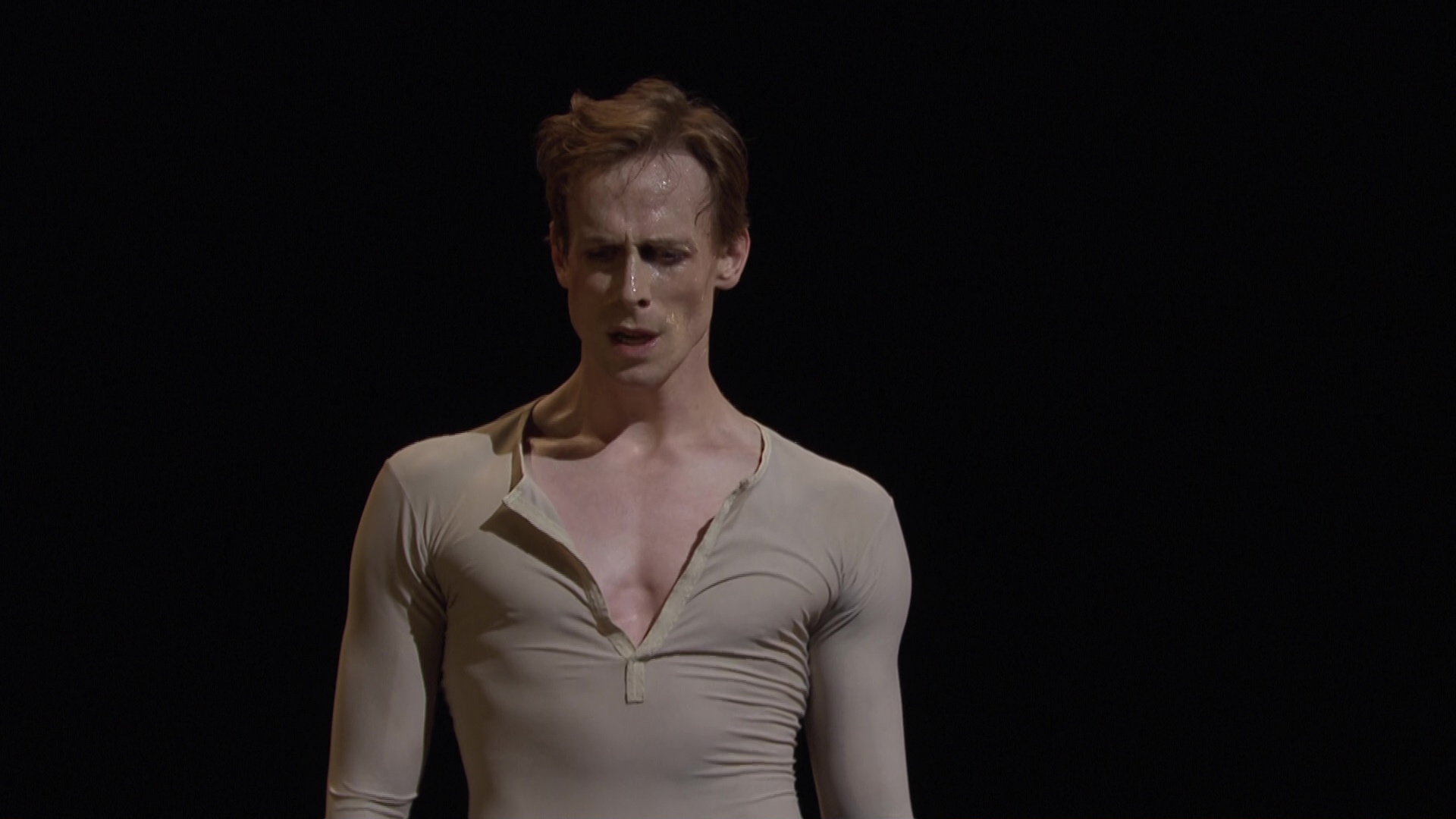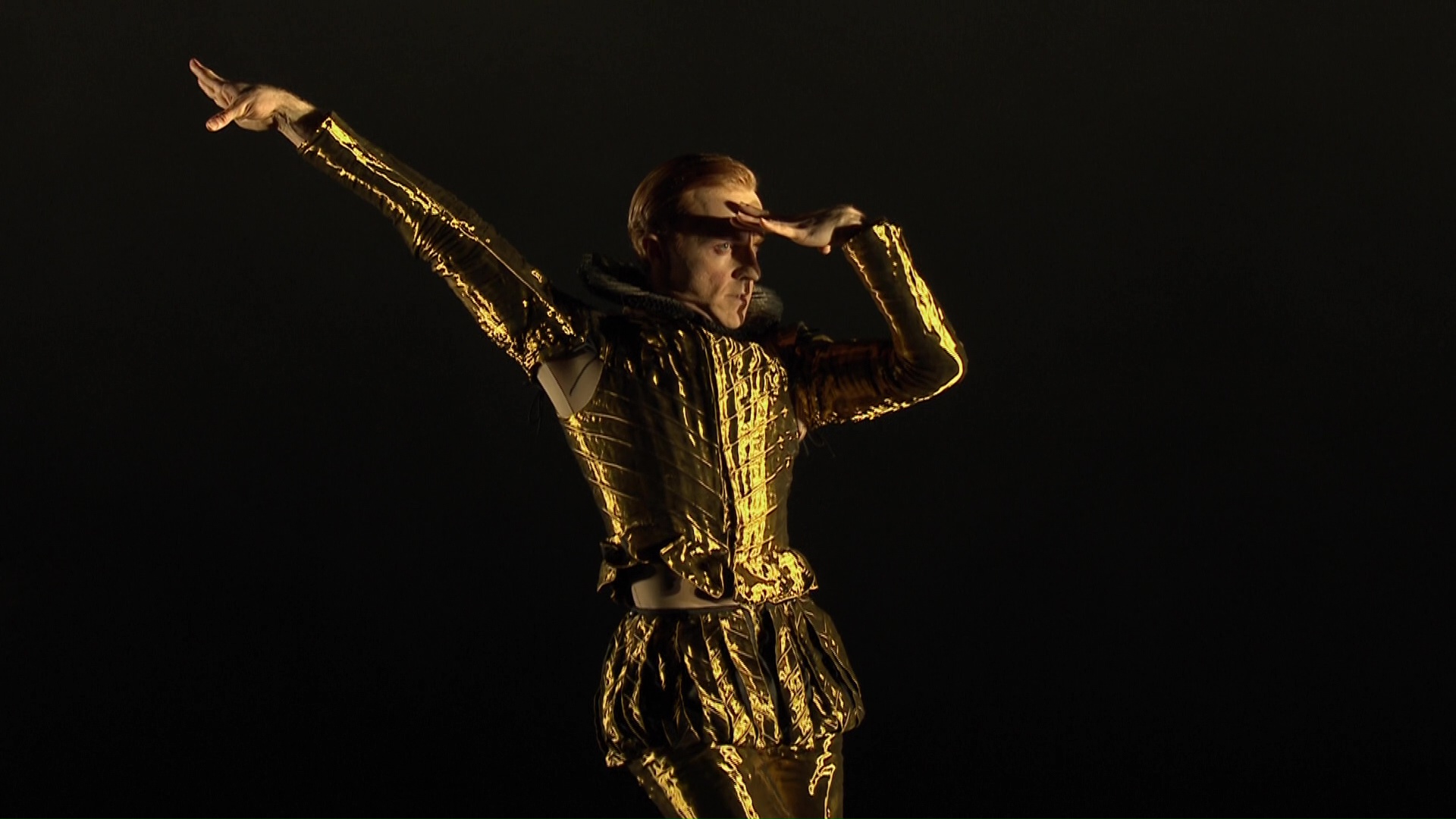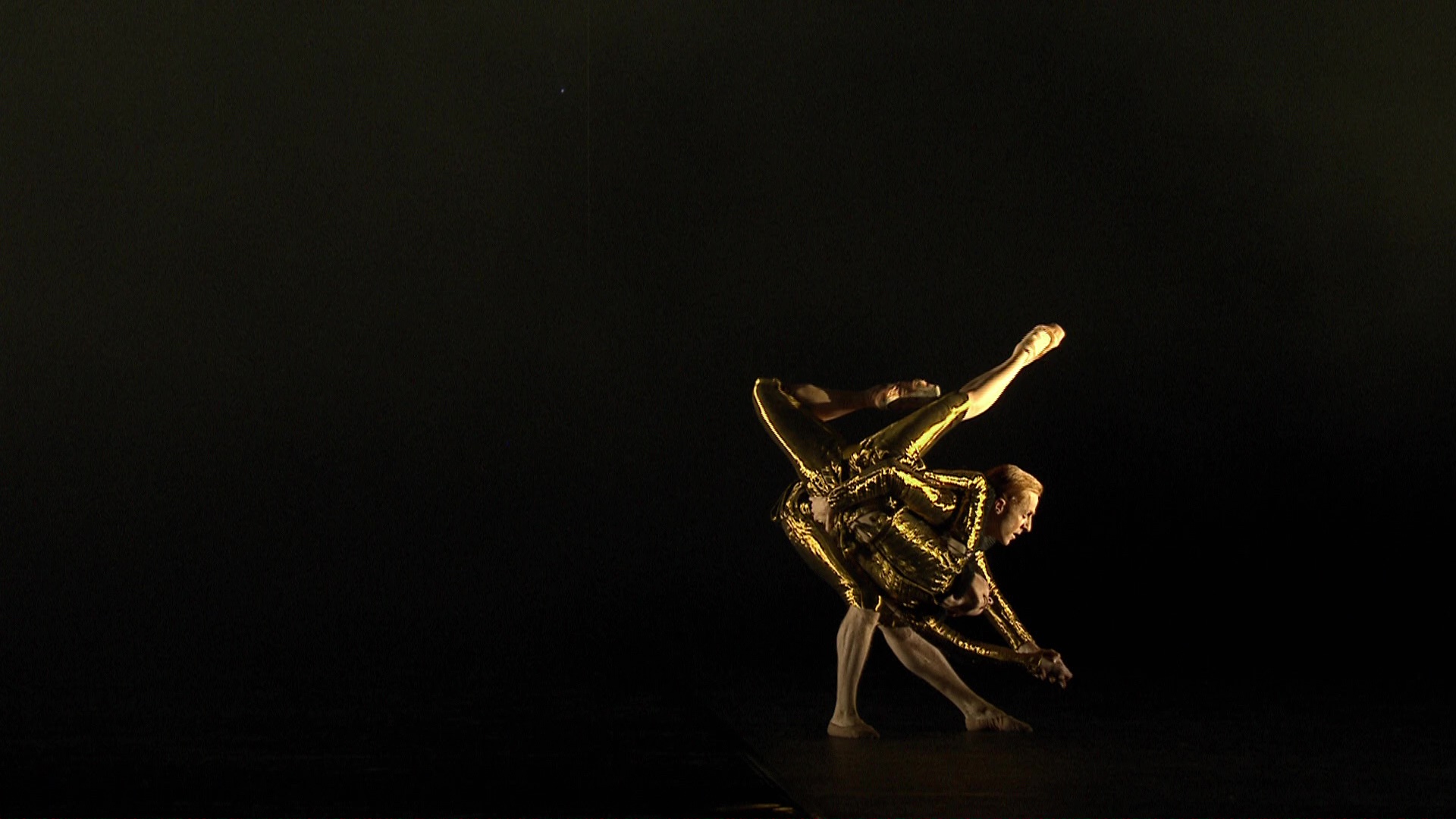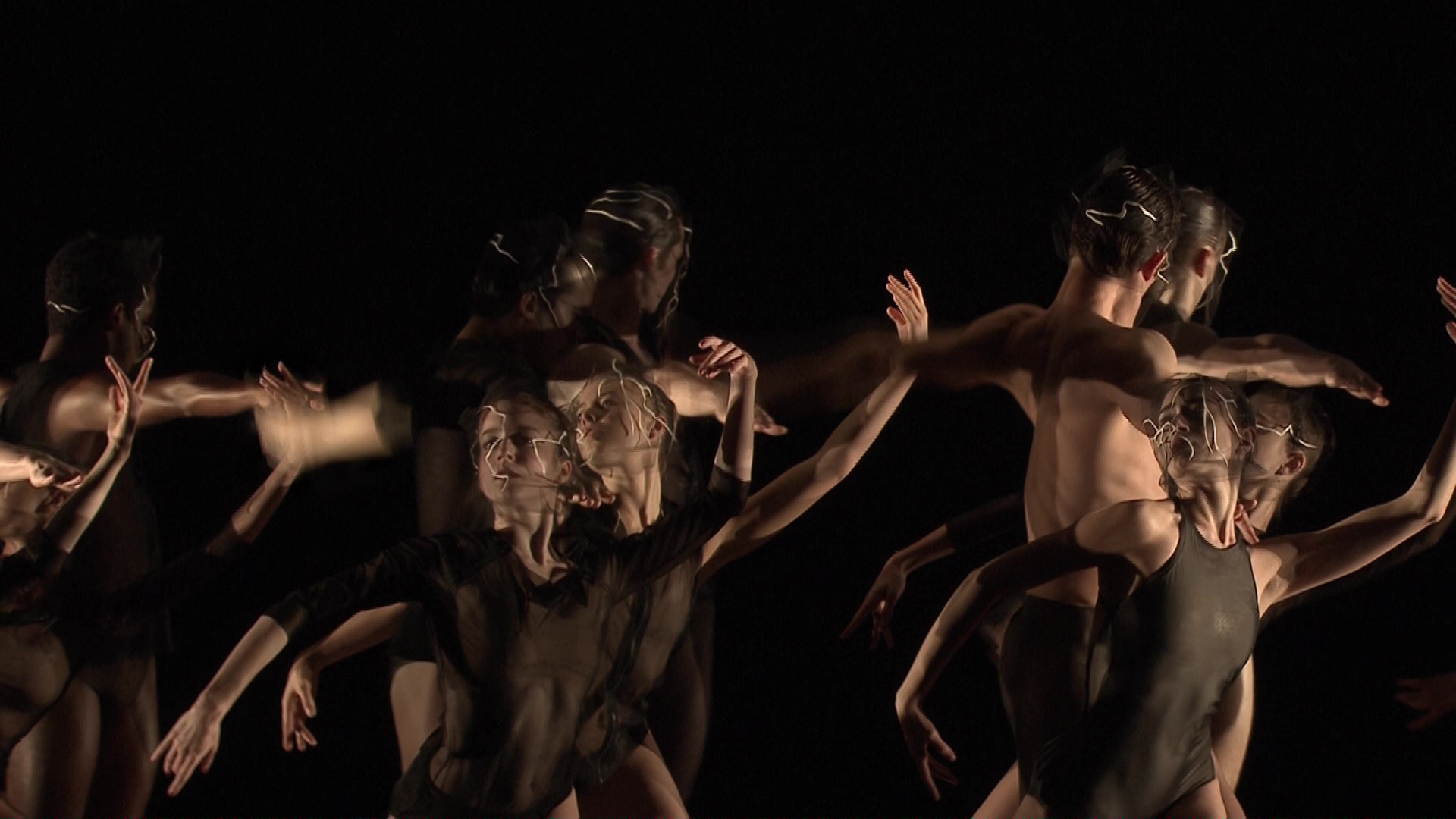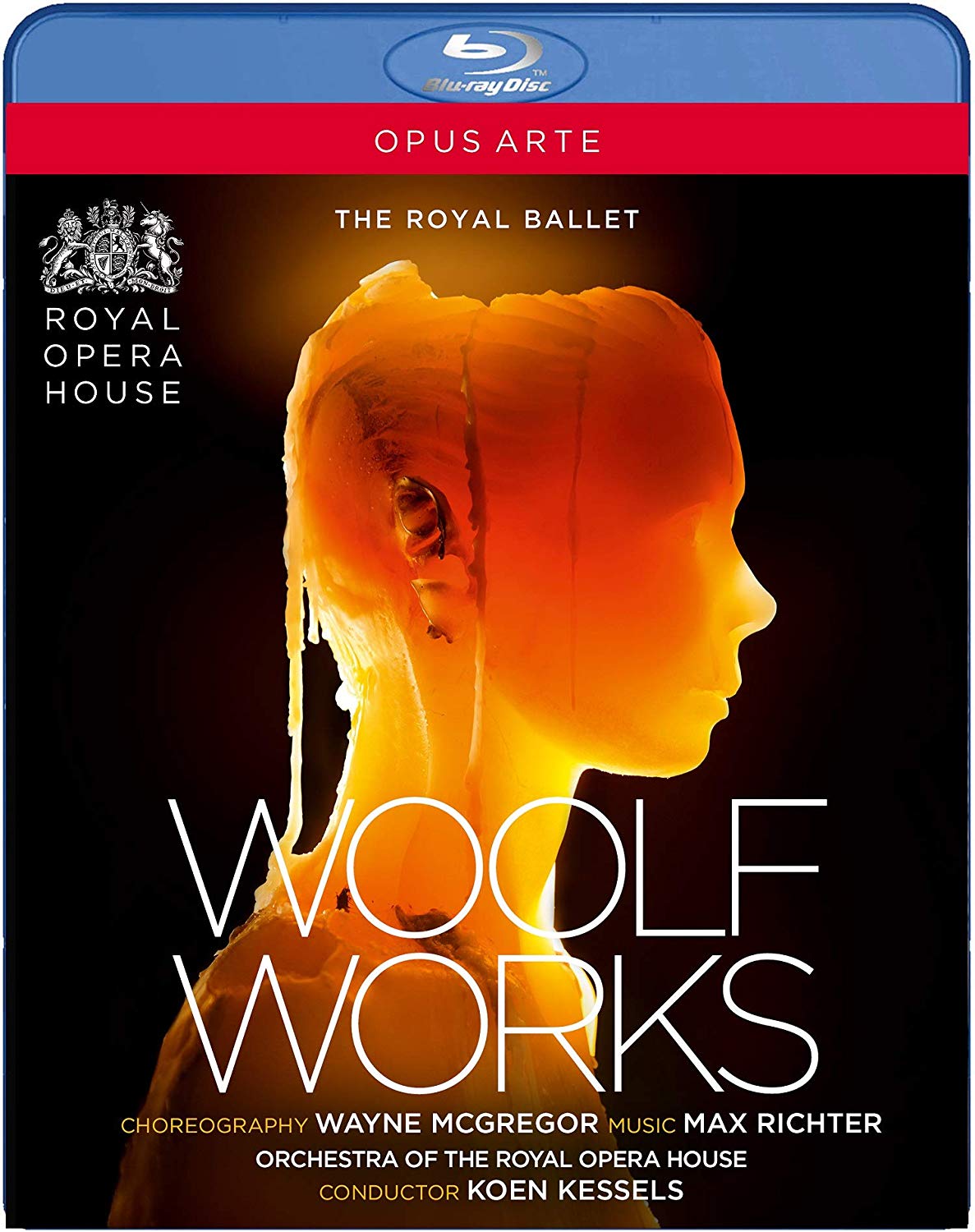
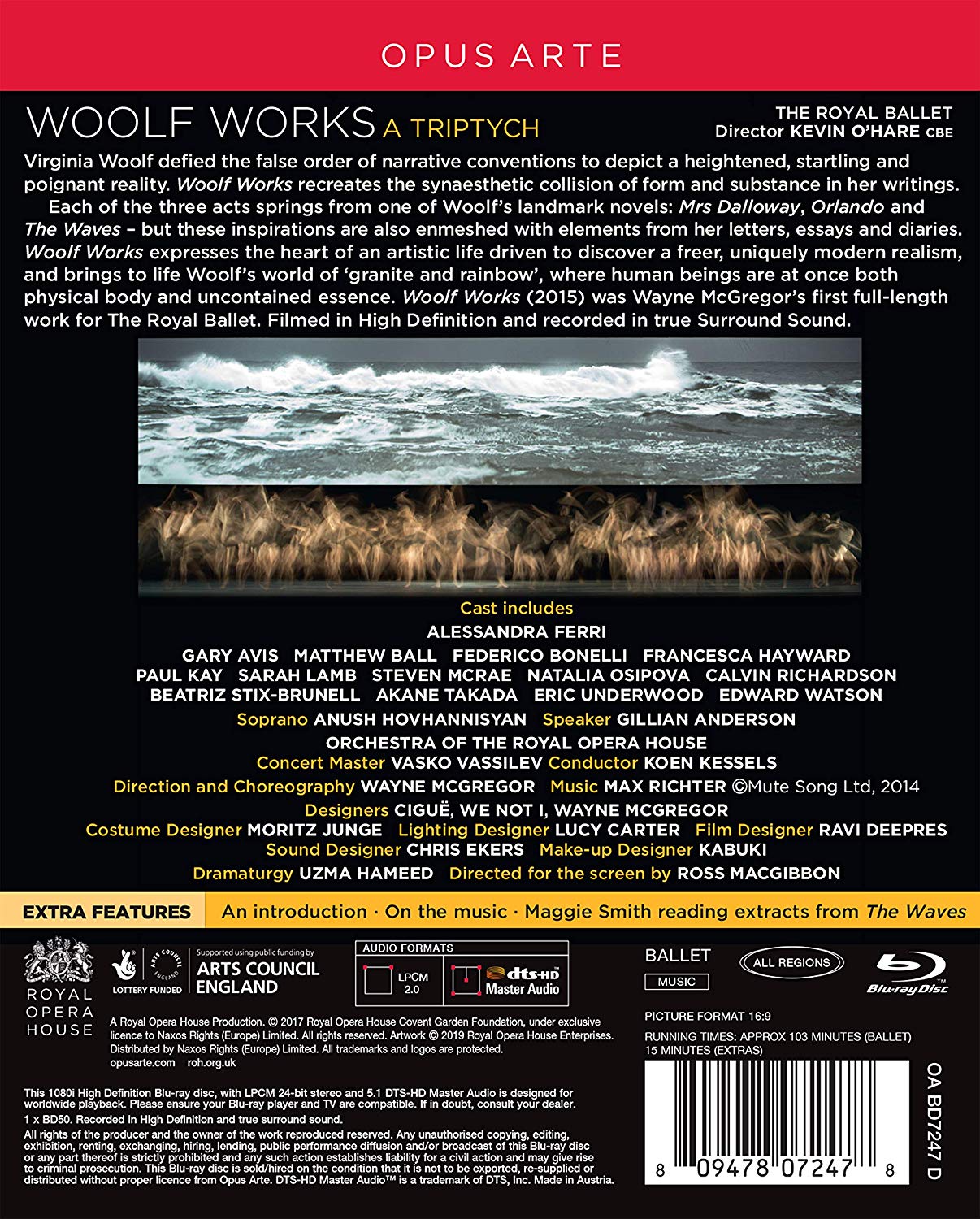
Woolf Works ballet. Original music by Max Richter. Directed and choreographed by Wayne McGregor. Staged 2017 at the Royal Opera House (revival of 2015 production). Stars Gary Avis, Matthew Ball, Federico Bonelli, Alessandra Ferri (special appearance), Francesca Hayward, Paul Kay, Sarah Lamb, Steven McRae, Natalia Osipova, Calvin Richardson, Beatriz Stix-Brunell, Akane Takada, Eric Underwood, and Edward Watson supported by other members of the Royal Ballet and students of the Royal Ballet School (Christopher Powney Artistic Director). Features soprano Anush Hovhannisyan and speaker Gillian Anderson. Koen Kessels conducts the Orchestra of the Royal Opera House (Concert Master Vasko Vassilev). 3 separate works are presented, all related to the writings of Virginia Woolf:
I Now, I Then (based on the 1925 novel Mrs Dalloway), designed by Ciguë
Becomings (inspired by the 1928 novel Orlando), designed by We Not I [not to be confused with the name of Act 1above]
Tuesday (inspired by the 1931 novel The Waves), designed by Wayne McGregor
Generally: costume design by Moritz Junge; lighting design by Lucy Carter; video projections by Ravi Deepres; sound design by Chris Ekers; makeup by Kabuki. Directed for TV by Ross MacGibbon. Released 2019, disc has 5.1 dts-HD Master Audio sound. Blended Grade: A-
I have always been terrified of Virginia Woolf. What could be more inscrutable than the actions (especial the sexual scandals) and the experimental writings of members of the British minor aristocracy in the 20th century, of whom Virginia was the High Priestess. But to write this review, I had to do some research (starting with Cliff Notes and expanded to the WWW). If you have read and liked any of her novels, you probably will enjoy the dancing in Woolf Works more than others. (If I like the dancing, then maybe I’ll work up the courage to read some of her books.)
First a special word about dramaturg Uzma Hameed. Her job is to build a rainbow between the ephemeral thoughts in Woolf’s words and the efforts of the ROB to create something almost entirely wordless for the audience to enjoy. Hameed wrote a 3-page piece about her rainbow that became the best thing I’ve seen published in a Blu-ray keepcase booklet. It’s so good, I’ll overlook the skimpiness of the booklet otherwise.
I Now, I Then (Mrs Dalloway)
Mrs. Dalloway is a stream-of-consciousness novel about some 20 characters who come up while the main character, Clarissa Dalloway (Alessandra Ferri) prepares, during a single day, to throw a dinner party. Clarissa married her husband, Richard (Gary Avis), for security. Now she has doubts. Though their relationship is correct, they aren’t as close as one might want:
Old Clarissa remembers the love young Clarissa (below played by Beatriz Stix-Brunell) shared with Peter Walsh (Federico Bonelli). Peter offered passion, but an uncertain future:
Clarissa also remembers Sally (Francesca Hayward), a rambunctious girl who now has 5 sons and who will be at Clarissa’s party:
Clarissa deems the kiss she shared with Sally to be the most exciting moment of her life. But this was in an era when a relationship between these two would have been out of bounds for both of them:
The time is after WWI and before WWII. Clarissa knew a British soldier, Septimus Warren Smith, who survived WWI, but suffered from shell-shock and eventually committed suicide. Septimus is played by Ed Watson, the Royal Opera star who has (among many strengths) perhaps a uniquely strong ability to portray states of mental anguish and despair:
Septimus stands for the decline of the British world-wide empire that everyone in Clarissa’s circle must contend with:
As pointed out by dramaturg Hameed, dance has, among all means of story-telling, the unique power to portray simultaneously the feelings of the same character at different ages and the interactions of different characters. The eye can take it all in. This is something beyond the power of the poet working with words and sentences. The dramatist (in a play or opera) can do this only poorly since a member of the audience can’t well understand different words coming from two voices at the same time. Thus in the finale of I Now, I Then, McGregor commands an ability to portray feelings and relationships with an economy of expression that would exceed what Virginia Woolf could herself deploy.
I think it’s understood that Mrs Dalloway was an alter ego for Virginia, who was 43 when Mrs Dalloway was published. Virginia was 59 when she died. Alessandra Ferri was about 52 when this recording was made, so it’s easy now for viewers to relate Alessandra to Virginia:
The 7 screenshots above only hint at the excellence of I Now, I Then as a 30-minute dance piece inspired by an entire novel. The simple set with 3 huge, slowly-moving frame structures (alas, not shown) looks impressive from many camera angles and is most attractively lit to support the emotional states evoked by the dancing. The costumes seem perfect. McGregor has a knack for getting great music for his work — this time in the form of a modern but lyrical score from Max Richter played by the full Royal Opera Ballet Orchestra. There was enough light on this set to produce gorgeous PQ and images at all ranges.
All the dancers are age-appropriate including Ferri. She retired at age 44 from the Royal Ballet. After 10 years off, she started a new free-agent career in character roles and is clearly revered by all. I did a Wonk Worksheet. The pace is 9.25 seconds per clip, and 64% of the shots show the full bodies of the dancers. While video content could have been and should have been more generous, I do not diagnose DVDitis. Otherwise, I question whether a better dance video could be made than this to honor a subject of high English literature. Grade A (would be A+ with a slower pace). (After seeing I Now, I Then, I think I’ll consider buying Mrs Dalloway the next time I’m at the bookstore.)
Becomings (Orlando)
In the novel Orlando, Woolf adds to her stream-of-consciousness style the complicating elements of time-travel through hundreds of years (beginning in the Elizabethan era) by a character who begins as a man but wakes up half-way through the book as a woman. But don’t think this is science fiction. One expert critic calls it a fanciful history of British literature. A close contemporary (who ought to know) calls it the longest love letter ever. All agree, it seems, that it was inspired by and written for one Vita Sackville-West, a love interest of Virginia for many years. The character Orlando stands for Vita (and is not autobiographical as was the character Mrs Dalloway).
Virginia and Vita were members of the Bloomsbury Group, a literary circle the members of which were known for liberal views on sexuality. But there were in those days tremendous barriers separating views from actions in sexual matters. Both Virginia and Vita married to comply with the expectations of society. Vita solved her problem by having children while maintaining an open marriage where both partners were free to follow their desires. Virginia had no children but stayed married to Leonard until she committed suicide at age 59. In her suicide letter to Leonard, Virginia thanked him for the happiness he had brought her, but explained that she no longer wanted to be a burden on him.
H’m. How do you relate something about the complicated and stressed lives of Vita and Virginia in a 30-minute dance? And forget about a plot that runs on for almost 700 years. Well, since Orlando begins his career at the time of Queen Elizabeth, why not dress the dancers in modern materials with designs from the era of the Virgin Queen? Why not darken the stage so nobody will notice there is no set. Then you can suggest the passage of time and development of the modern age with a fancy laser light show. And all this will work well with the dance style attained by Wayne McGregor in such recent pieces as Chroma, Infra, and Limen.
So here goes with our first screenshot below showing Steven McRae as Orlando — or is it Vita — or Sir Walter Raleigh? It’s probably pointless to try to relate any of the dancers to figures in the Orlando novel. In fact, with the huge gloomy stage, strange makeup, and fast action, it would take an expert to correctly identify the dancers even with all their names clearly stated in the keepcase booklet:
Next below is a typical McGregor move with McRae and (I think) Natalia Osipova:
And here is a duet with Sarah Lamb and Eric Underwood:
If there is one McGregor dance sequence that towers over all the rest in our McGregor HDVDs, it would be the duet with Lamb and Underwood in Limen. So next below is my favorite shot of Lamb/Underwood from Limen for you to compare to the image above from Becomings:
And here’s a shot of Underwood with (I think) Beatriz Stix-Brunell:
Does the shot above look somehow familiar? It reminded me a lot of the famous image on the front cover of the Chroma/Infra/Limen HDVD:
Next below a women’s quartet (I’m not sure about all of them so I’ll not try to identify anyone):
I know for sure the next shot below is Ed Watson and Osipova. Note the impressive lighting in this and the remaining images:
Compare the screenshot image above with the picture next below (made with a still image camera) that shows the lighting really looked like to the live audience:
Now back to screenshots:
Our last shot from Becomings is the finale with everybody on deck. This and many other views would have benefited greatly from recording in 4K with HDR. In this 2K image, I can identify only some of the 12 dancers. With 4K, I would probably be able to identify most or all of them. And I think 4K and HDR together would greatly improve the quality of the images throughout on this dark stage with lots of stage smoke hovering about:
Finally, here’s a still-camera image of the house giving you a better idea about how impressive the laser-light show was to the live audience:
So what to make of Becomings? I liked the costumes and lighting. Richter’s music is always interesting, pleasing, and appropriate for the stage action. I was happy to see more of McGregory’s signature contemporary moves. SQ is good. But PQ suffers from trying to cope with the gloom. See again the Wonk Worksheet. The pace is a respectable 11.4 seconds and 83% of the shots show the whole bodies of the dancers. So there is no DVDitis. Starting with A+, I knock this down to a C+ for an overambitious libretto and stage too dark for proper recording with 2K cameras. But I cheerfully reward MacGibbon for his DVDitis-free video content by boosting the grade up to B+. (I think Becomings is fun to watch, but I don’t think I’ll put Orlando on my reading list.)
Tuesday (The Waves)
Tuesday is in part inspired by The Waves, Woolf’s last and most experimental work. The Waves consists of soliloquies from 6 different characters woven together in poetic ways. In McGregor’s triptych, Tuesday relates to Woolf’s suicide by drowning. She did not die in the rough ocean, but in a nearby quiet river that she entered with her pockets full of stones. This she did on a Tuesday. Before slipping into the waters, she wrote a sad but beautiful letter to her husband which is recited at the beginning of Tuesday. The purpose of the letter was to absolve her husband from any responsibility for what she planned to do. Even though her marriage was based more on the demands of society than on feelings of passion for her husband, it’s clear from her letter that she held him in the highest regard. All this is just yet another example of the disasters that follow when society demands that a person live his or her life in a manner that is not natural to that person.
Next below is a beautiful shot of rare choreography with the dancers turning their backs to the audience. Ferri is back dancing (pun intended) as Virginia with Bonelli as Leonard:
The 6 children represent the 6 characters in The Waves:
If you can explain to me about the strange “spaghetti” masks shown below, please send me an email to hank@hdvdarts.com!
McGregor comes up with a mass number finale to give floor time to more members of the corps:
Tuesday looks good enough in the home theater. Next below is a still camera image that may more accurately show what a live spectator may have seen from his $300 seat:
I’ll apply the my comments for Becomings to Tuesday except I note the pace in Tuesday is an admirable 14 seconds per clip while the full-body test is down to only 68%. I give Tuesday another B+. I give Woolf Works a blended grade of A-. (Well, I’ll put The Waves on my reading list, but only if I read and like Mrs Dalloway first.)
PS: We have seen many videos from the Royal Ballet shot by Ross MacGibbon. The overall video pace for Woolf Works is 13.2 seconds per clip. I think this may be MacGibbon’s first video free of DVDitis. This would be a significant step forward. It suggests that the industry may finally be giving the HDVD market priority over the DVD market in the design of HDVD titles.
Here is a clip from Opus Arte:
OR




